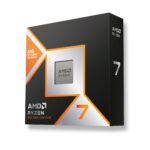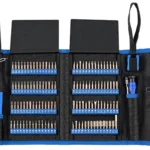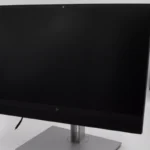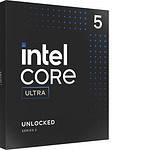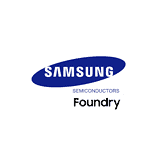A PC that turns on but shows no display can be frustrating. This common issue often has simple solutions. Checking connections and resetting graphics drivers can quickly resolve most no-display problems.
The first step is to ensure all cables are securely connected. Check the power cord to the monitor and the video cable between the monitor and PC. For dedicated graphics cards, plug the cable into the card’s port, not the motherboard.
If connections are secure, try resetting the graphics driver. Press Windows + Ctrl + Shift + B to restart the driver. This quick fix often resolves temporary display issues without needing to reboot the entire system.
Troubleshooting a PC with No Display: A Step-by-Step Guide
It can be frustrating when you power on your computer and are met with a black screen. Don’t worry, though. There are several things you can try to fix this common problem. Let’s walk through some troubleshooting steps to get your display working again.
1. Check the Obvious
Before we dive into more complex solutions, let’s start with the basics:
- Is the monitor turned on? Seems simple, but it’s worth checking! Make sure the power cable is securely connected and the power light is on.
- Is the monitor set to the correct input? Your monitor might be set to the wrong input source (e.g., HDMI 1 instead of HDMI 2). Use the buttons on your monitor to cycle through the available inputs.
- Are the cables connected properly? Ensure the video cable (HDMI, DisplayPort, etc.) is firmly plugged into both your monitor and your computer’s graphics card (or motherboard if you’re using integrated graphics).
- Test with a different cable or monitor: If possible, try using a different video cable or a different monitor to rule out a problem with those components.
2. Internal Checks
If the external checks don’t reveal the issue, it’s time to look inside your computer:
- Is the graphics card seated correctly? Open your computer case and make sure your graphics card is securely seated in its slot. Gently push it down to ensure a good connection.
- Are the RAM modules seated correctly? Reseat your RAM modules by gently pushing them down until they click into place. Sometimes loose RAM can cause display problems.
- Check for any loose connections: Inspect all the cables inside your computer, including the power supply connections to the motherboard and graphics card.
3. BIOS Issues
Sometimes, a black screen can be caused by problems with your computer’s BIOS (Basic Input/Output System):
- Reset the BIOS: This can often resolve unusual behavior. You can usually reset the BIOS by removing the CMOS battery on your motherboard for a few minutes or by using a jumper on the motherboard.
4. Other Potential Problems
If you’re still experiencing a black screen, here are some additional things to consider:
| Problem | Possible Solutions |
|---|---|
| Faulty graphics card | Try a different graphics card if you have one. If not, you may need to have your card tested or replaced. |
| Overheating | Clean your computer’s fans and vents. Ensure proper airflow inside the case. |
| Power supply issues | Test with a different power supply if possible. A failing power supply may not provide enough power to the components. |
| Operating system errors | Try booting into Safe Mode. If this works, you may need to troubleshoot software or driver issues. |
5. Seek Professional Help
If you’ve tried all these steps and still can’t get a display output, it might be time to seek professional help. A computer repair technician can diagnose the problem and recommend the best course of action.
Key Takeaways
- Check all cable connections between the PC and monitor
- Reset graphics drivers using Windows + Ctrl + Shift + B
- Ensure the video cable is plugged into the correct port on the graphics card
Diagnosing the Issue
There’s nothing more disheartening than hitting the power button on your PC and being greeted by a blank screen. Whether you’re rushing to finish a project or eager to jump into a game, a black screen can bring your productivity to a screeching halt. But don’t panic! Often, this common issue can be resolved with a bit of troubleshooting.
When a PC turns on but displays nothing, systematic troubleshooting is crucial. This process involves examining power connections, inspecting hardware components, and evaluating display signals to pinpoint the root cause.
Checking Power Connections
Start by verifying all power connections. Ensure the power cord is securely plugged into both the PC and the wall outlet. Check if the power supply unit (PSU) is functioning correctly. Listen for fan noise and look for indicator lights on the motherboard.
If the PC seems to have power but still shows no display, inspect the monitor’s power cable. Make sure it’s firmly connected to both the monitor and the power source. Some monitors have a separate power brick, so check its connections too.
Test the monitor with another device to rule out a faulty display. If possible, try a different power outlet to eliminate electrical issues.
Inspecting Hardware Components
Examine internal hardware components for visible damage or loose connections. Open the PC case and look for any signs of electrical shorts or burnt components. Check if all fans are spinning, including those on the CPU and graphics card.
Reseat the RAM modules and graphics card. Remove and reinsert them firmly into their slots. If your motherboard has integrated graphics, try removing the dedicated graphics card and connecting the monitor to the motherboard’s display port.
Inspect the CMOS battery on the motherboard. A dead CMOS battery can sometimes cause display issues. Replace it if necessary.
Listen for beep codes when starting the PC. These can indicate specific hardware problems. Consult your motherboard manual to interpret the beeps.
Evaluating Display Signals
Check the connection between the PC and monitor. Ensure the display cable (HDMI, VGA, DVI, or DisplayPort) is securely plugged in at both ends. Try a different cable or port if available.
If using a dedicated graphics card, make sure the monitor is connected to it and not the motherboard’s display output. Some PCs disable the integrated graphics when a dedicated card is installed.
Test the monitor with another PC to rule out a faulty display. If possible, connect your PC to a different monitor or TV to isolate the issue.
Try booting into the BIOS by pressing the designated key during startup (often Delete, F2, or F12). If you can see the BIOS screen, the issue may be with the operating system or drivers.


